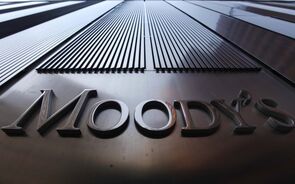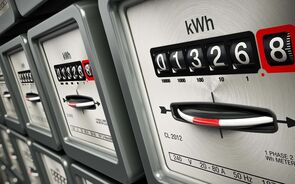No jobs, no recovery (artigo do Irwin Kellner)
1 Mensagem
|Página 1 de 1
No jobs, no recovery (artigo do Irwin Kellner)
No jobs, no recovery
Chief economist says that, absent job gains, U.S. recovery will stall.
Where's the beef?
Commentary: Economy still isn't creating any jobs
By Dr. Irwin Kellner, CBS MarketWatch.com
Last Update: 11:18 AM ET Sept. 9, 2003
HEMPSTEAD, N.Y. (CBS.MW) -- A recovery without new jobs won't be a recovery for long.
By now, employment gains should have taken over from low mortgage rates as the chief driver of the economic recovery. Long-term interest rates are rising as they usually do at this point in the cycle, but job creation is not.
According to the Mortgage Bankers Association, the jump in long-term rates has pushed mortgage refinancings down 80 percent from their May peaks. This effectively chokes off a major source of consumer spending -- money that people have been able to pull out of their homes.
Such a development is not surprising. What is startling is that job creation does not appear to be not coming along to lend a helping hand.
True, consumers are still enjoying some gains in buying power, thanks to three tax cuts and very low inflation. But much of this stimulus is temporary in nature, thus won't help much going forward.
It is also a fact that business spending on capital goods -- especially technology -- appears to be picking up. Economists had been looking to plant and equipment spending to give the economy a second-stage lift.
The problem is that capital spending makes up only about 12 percent of the economy, while consumer spending accounts for nearly 70 percent. Moreover, just about all of today's outlays by business is for equipment; hardly any money is being spent on structures.
This does little to help job creation. For one thing, it does not take as many workers to build machinery, computers, and other types of equipment as it does to build a factory, warehouse or office building. In addition, lots of this equipment comes from offshore. Finally, to the extent that this new equipment boosts productivity, it hurts, rather than helps, job growth in the U.S.
Productivity is great for profits and for those with a job. It enables business to boost wages, hold the line on prices (if not actually cut them) and still earn more money. However, productivity is anathema to job hunters, since it enables companies to do more with fewer workers.
Add to this what researchers at the Federal Reserve Bank of New York call "an unusually high concentration of structural changes resulting in permanent shifts in the distribution of workers throughout the economy," and you have today's unusually bleak job picture.
At this point in past recoveries, there were 6 percent more jobs than there were at the end of past recessions. Even in the so-called "jobless recovery" following the 1990-91 recession, employment was rising at this juncture. But now, 21 months after the 2001 recession ended, there are 1 percent fewer jobs.
This puts the U.S. economy in uncharted territory. We have never had a sustained recovery without job creation.
Chief economist says that, absent job gains, U.S. recovery will stall.
Where's the beef?
Commentary: Economy still isn't creating any jobs
By Dr. Irwin Kellner, CBS MarketWatch.com
Last Update: 11:18 AM ET Sept. 9, 2003
HEMPSTEAD, N.Y. (CBS.MW) -- A recovery without new jobs won't be a recovery for long.
By now, employment gains should have taken over from low mortgage rates as the chief driver of the economic recovery. Long-term interest rates are rising as they usually do at this point in the cycle, but job creation is not.
According to the Mortgage Bankers Association, the jump in long-term rates has pushed mortgage refinancings down 80 percent from their May peaks. This effectively chokes off a major source of consumer spending -- money that people have been able to pull out of their homes.
Such a development is not surprising. What is startling is that job creation does not appear to be not coming along to lend a helping hand.
True, consumers are still enjoying some gains in buying power, thanks to three tax cuts and very low inflation. But much of this stimulus is temporary in nature, thus won't help much going forward.
It is also a fact that business spending on capital goods -- especially technology -- appears to be picking up. Economists had been looking to plant and equipment spending to give the economy a second-stage lift.
The problem is that capital spending makes up only about 12 percent of the economy, while consumer spending accounts for nearly 70 percent. Moreover, just about all of today's outlays by business is for equipment; hardly any money is being spent on structures.
This does little to help job creation. For one thing, it does not take as many workers to build machinery, computers, and other types of equipment as it does to build a factory, warehouse or office building. In addition, lots of this equipment comes from offshore. Finally, to the extent that this new equipment boosts productivity, it hurts, rather than helps, job growth in the U.S.
Productivity is great for profits and for those with a job. It enables business to boost wages, hold the line on prices (if not actually cut them) and still earn more money. However, productivity is anathema to job hunters, since it enables companies to do more with fewer workers.
Add to this what researchers at the Federal Reserve Bank of New York call "an unusually high concentration of structural changes resulting in permanent shifts in the distribution of workers throughout the economy," and you have today's unusually bleak job picture.
At this point in past recoveries, there were 6 percent more jobs than there were at the end of past recessions. Even in the so-called "jobless recovery" following the 1990-91 recession, employment was rising at this juncture. But now, 21 months after the 2001 recession ended, there are 1 percent fewer jobs.
This puts the U.S. economy in uncharted territory. We have never had a sustained recovery without job creation.
-
Info
1 Mensagem
|Página 1 de 1
Quem está ligado:


